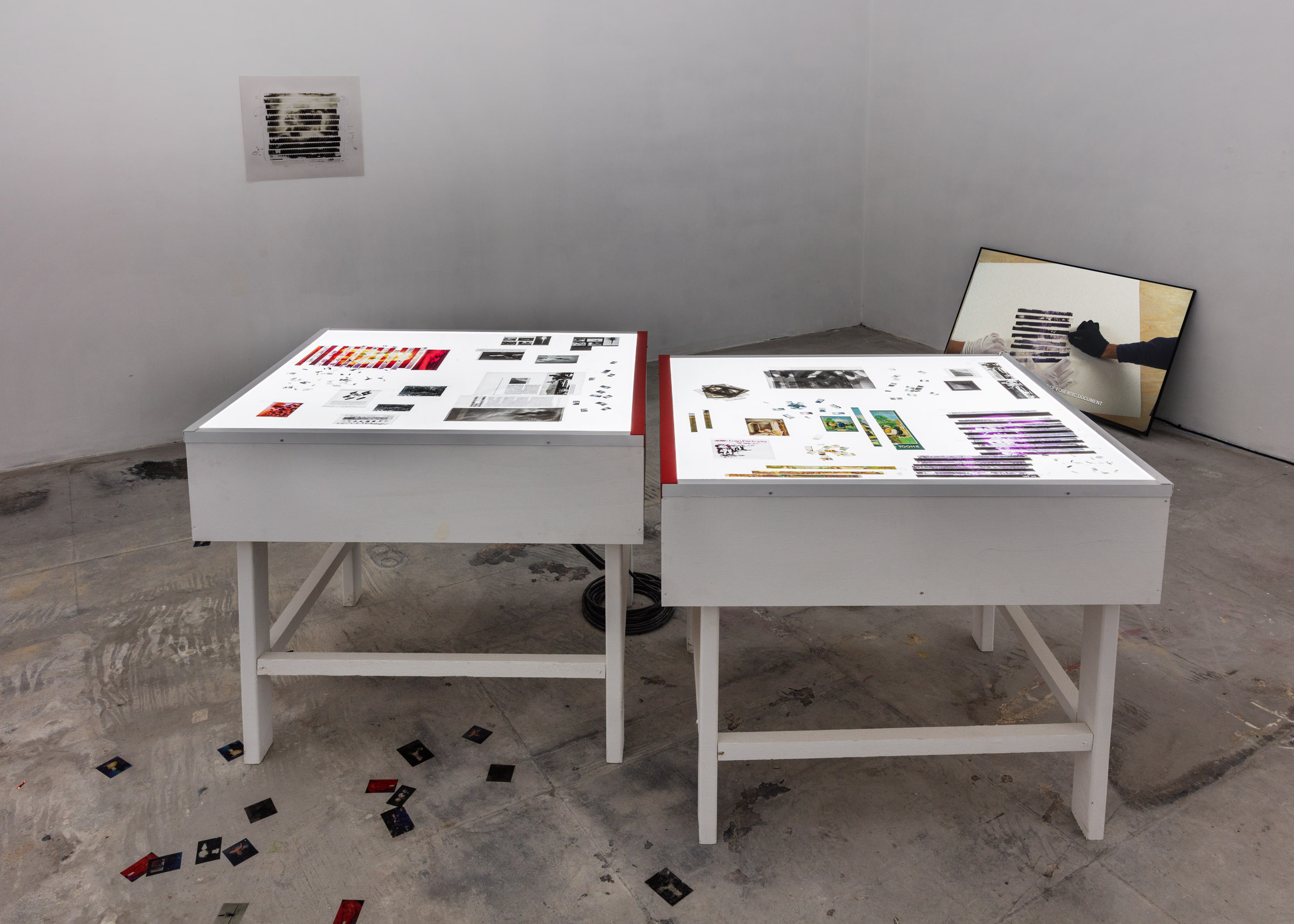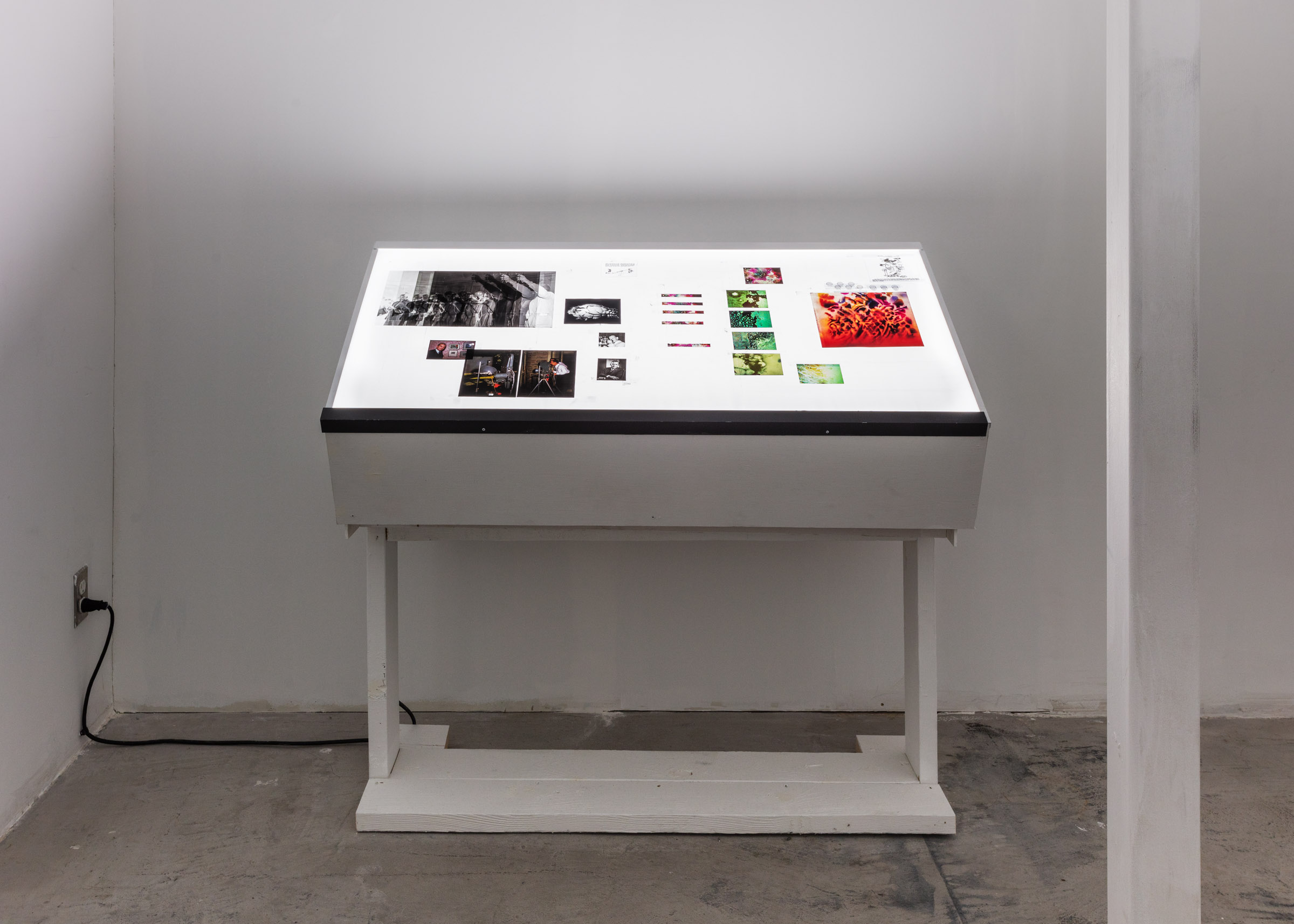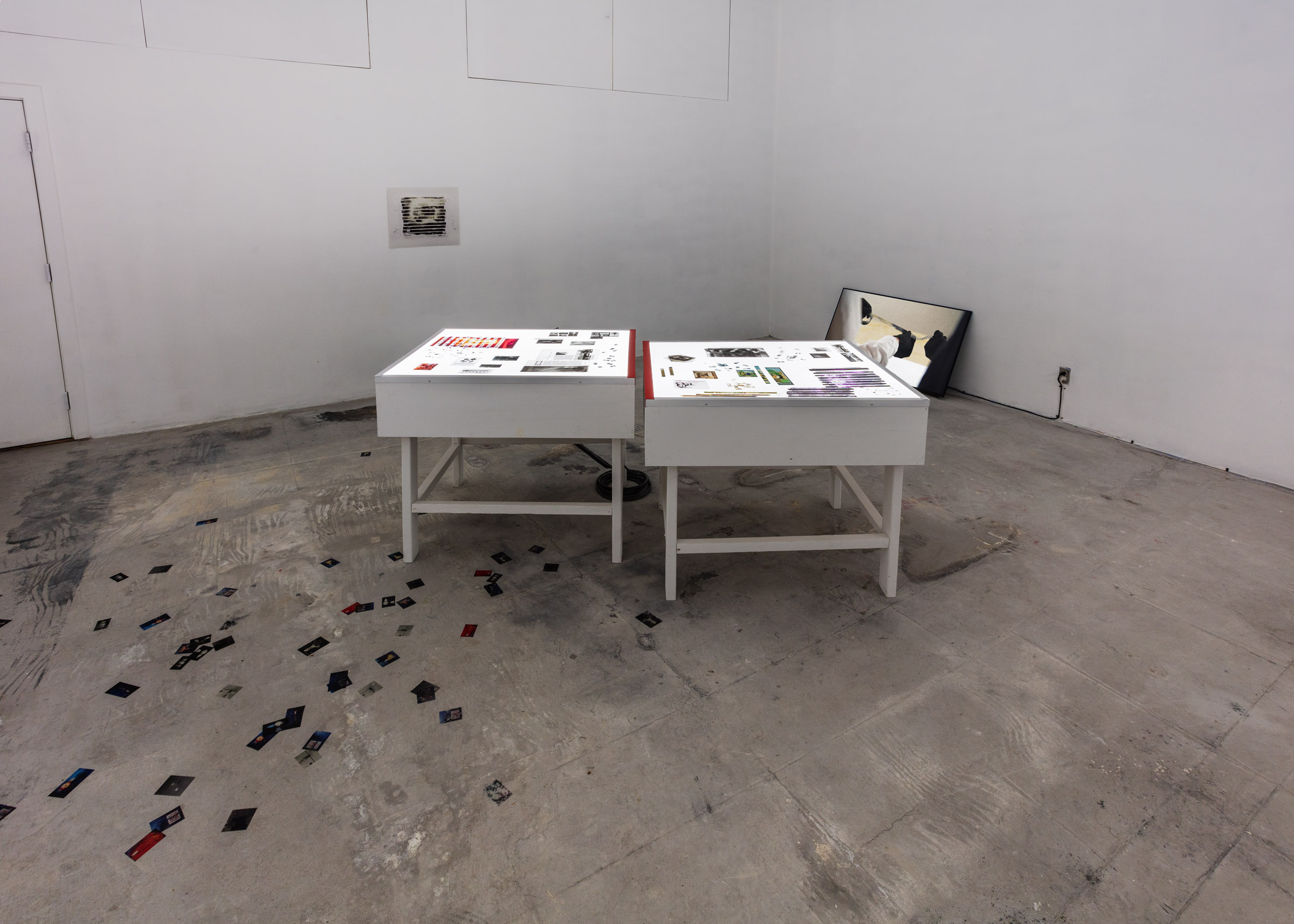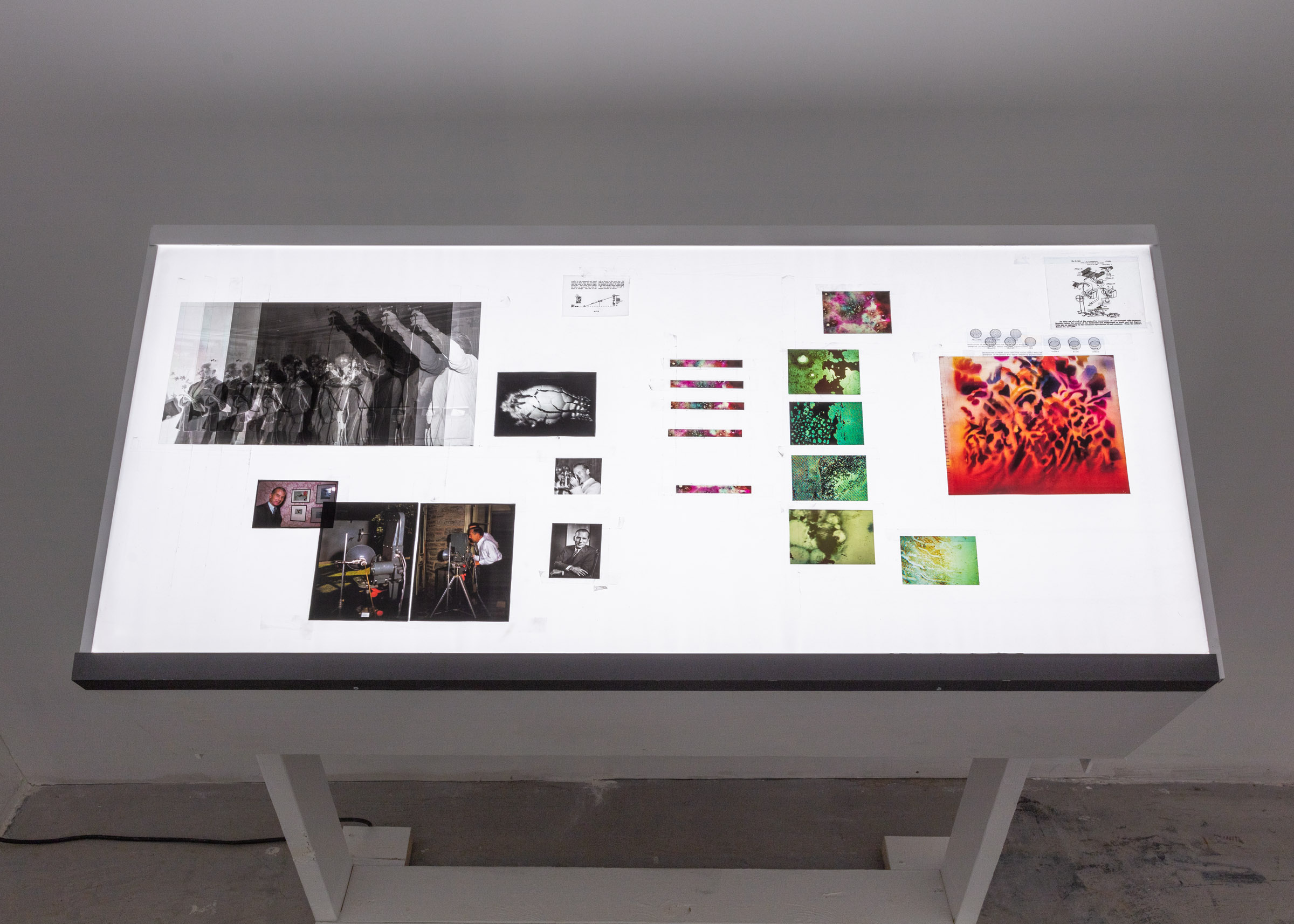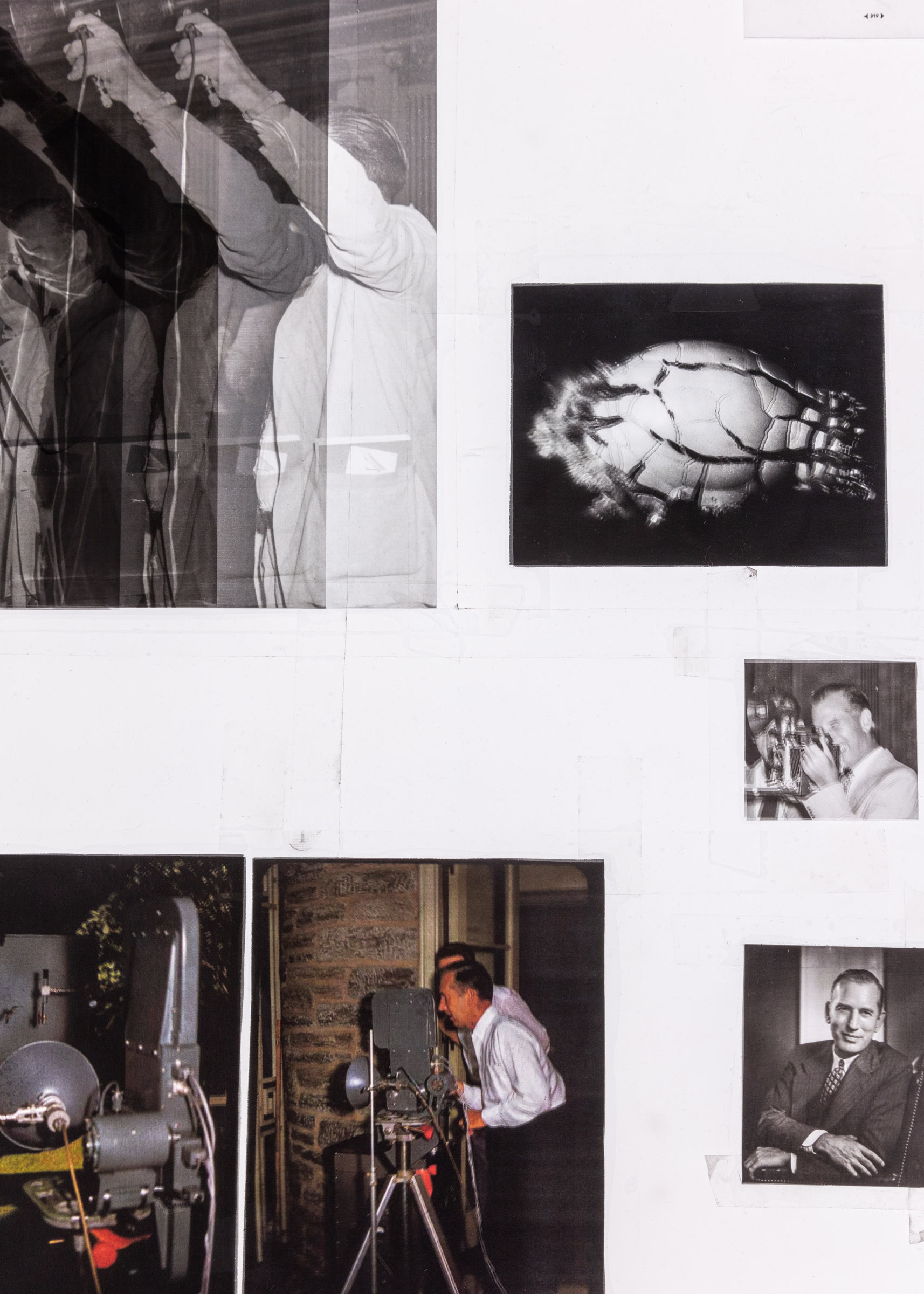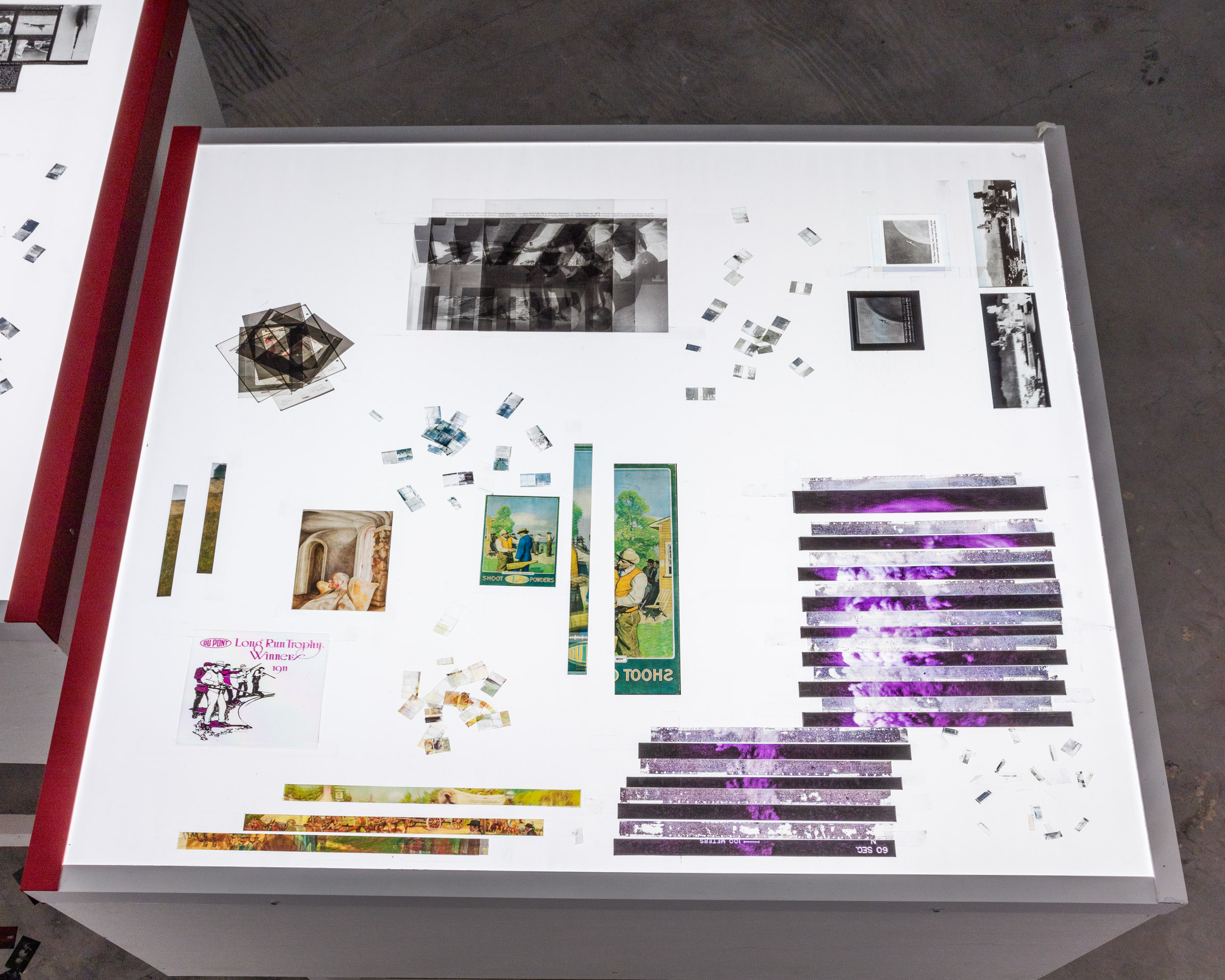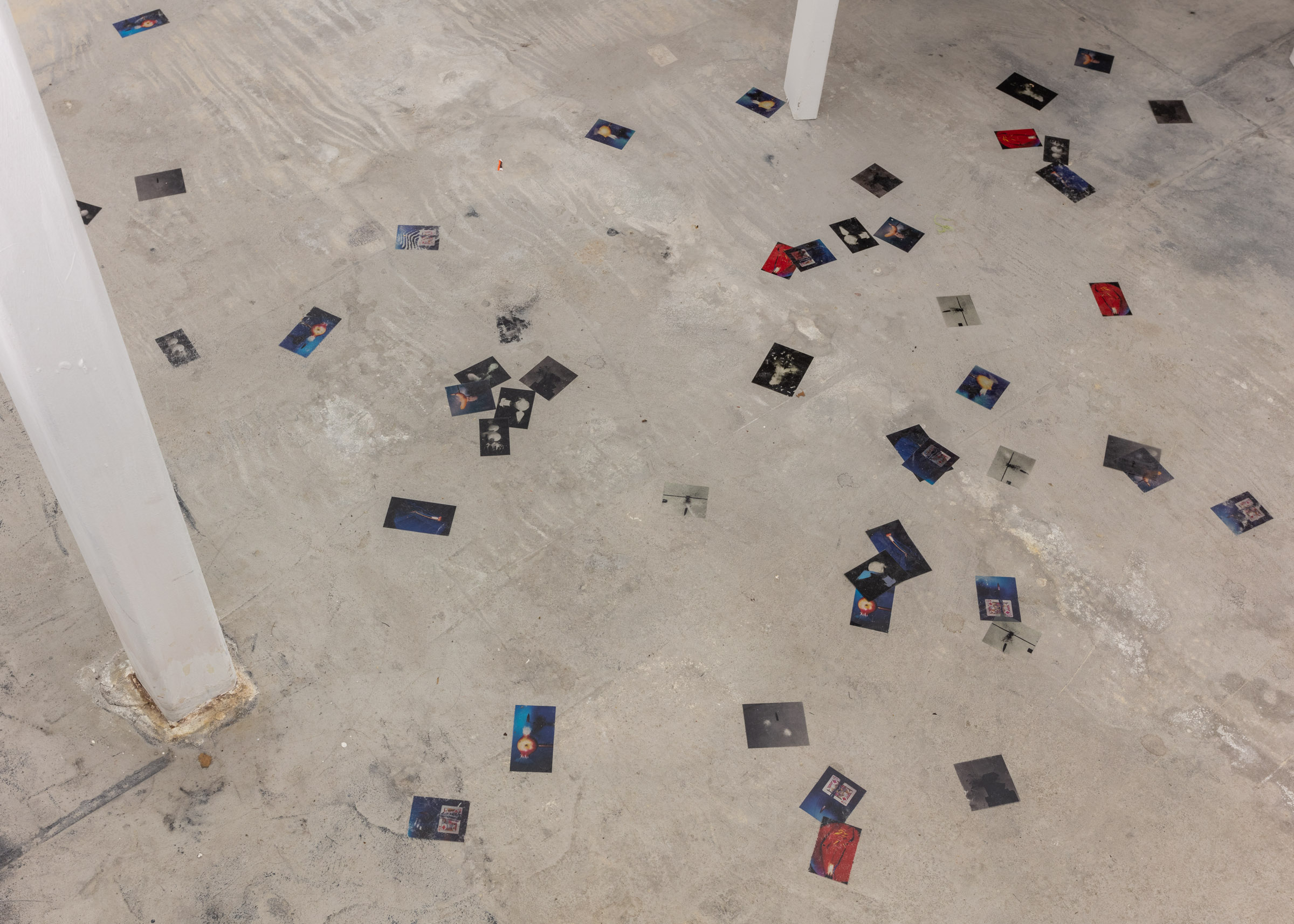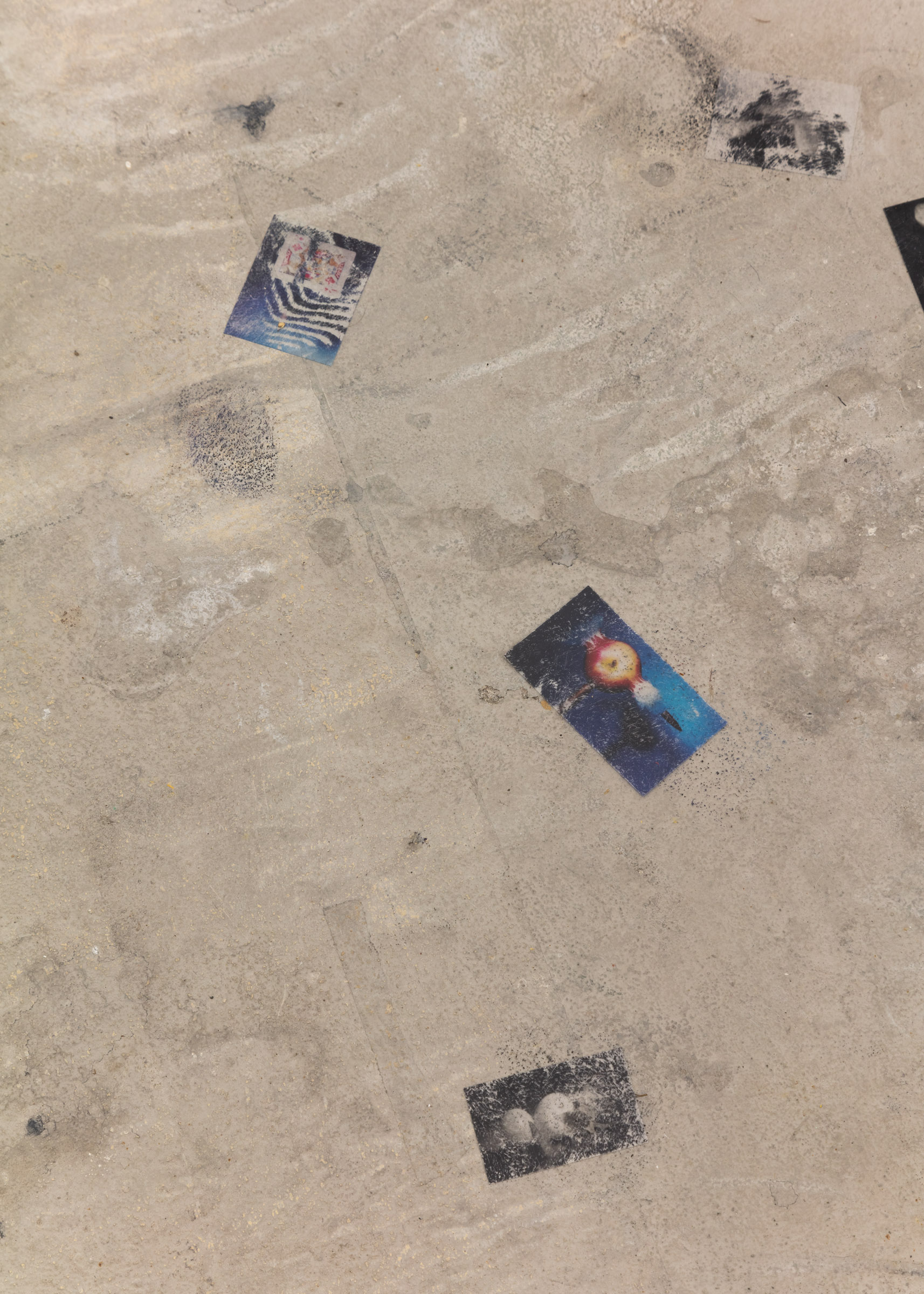See Through I + II
2023Custom-built light tables, digital prints on transparencies, 16mm film, splicing tape
See Through is an extended photographic installation, composed of acetate prints and 16mm film fragments arranged between three custom-built light tables and the gallery’s floor.
The photographs and documents displayed on the tables revolve around a peculiar historical episode, spanning between the 1910s and the 1960s, during which time military-industrial giant DuPont chemical was enthusiastically researching and manufacturing new and experimental kinds of cinematic film stock. The fragments of text and imagery act as forensic documents, attesting to these unlikely threads between military-industrial power and artistic production, connecting them with little-known patronage networks DuPont maintained with many influential painters, musicians, and performers throughout the era.
Cross-sections of work by N. C. and Andrew Wyeth, Howard Pyle, and Frank Schoonover sit alongside DuPont’s documents from the Manhattan Project or ads for military photographic products. Research materials from pioneering musician and inventor Mary Hallock Greenewalt sit beside photographs taken by her son, Crawford Greenewalt, who served as DuPont’s president from 1948-63. Strewn across the gallery’s floor are dozens of miniature transparency prints, featuring high-speed images taken by Crawford Greenewalt’s friend, photographer and military contractor Harold Edgerton.
Quietly scenographic in its design, the installation is intended to conjure associations with both authoritative and unruly forms of inquiry: museological research displays on the one hand, and paranoiac investigations on the other. This ambivalent approach to research-based art channels and illustrates one the work’s central tensions: a desire to reveal the sordid material powers we know are hiding throughout histories of art and film, a recursive suspicion of one's own authority in chronicling these depradations, and an itching uncertainty of what to do with the information revealed.
